
Mercedes Sprinter Vans are excellent multitaskers, easily tackling all sorts of jobs from long haul cargo deliveries to mobile toolbox for a tradesperson to making a base for a camper conversion. Through many years servicing and repairing these vehicles, we have encountered some common issues. We’ve put together our own chart list of the issues that you may encounter.
1. Front Suspension
Ball joints on lower control arms wear and become loose and noisy; worn (loose) sway bar links will clunk too. Tie rod ends wear out prematurely and affect the steering feel. Leaking shock absorbers make the latter even worse and create nasty wallowy ride and tippy feeling. These problems strike most vans that see lots of dirt or gravel roads, but eventually reveal themselves on all Sprinters.
2. Engine Drive Belt
Once the van reaches 120-150K km (75-95K miles) on its odometer, the belt idler pulleys or tensioner will start their song of death. If overlooked, their bearings jam and stop spinning. This instantly heats up and destroys the belt. And it’s time to call the tow truck, because this van cannot be driven without it.
The alternator freewheel clutch can freeze up and cause the same amount of trouble.
Our recommendation is to replace these parts preventatively before they ruin your day and your wallet. Just remember, that stuff always breaks at the least appropriate time.
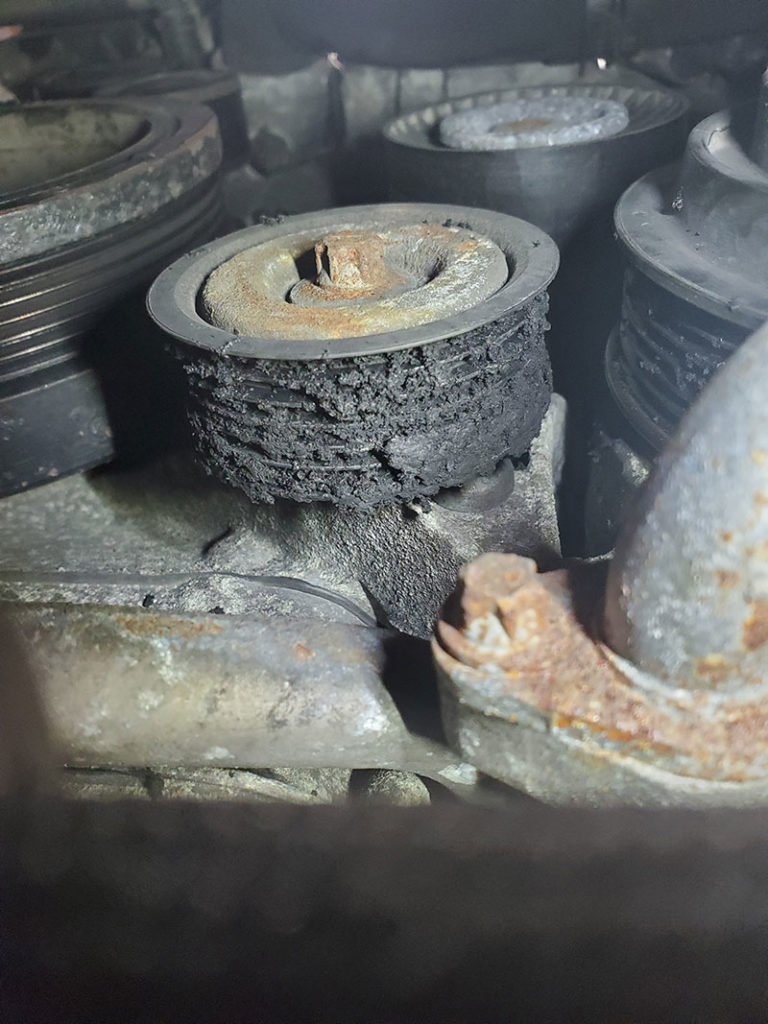
3. Emissions Controls (DPF, DEF, SCR)
These vans are blessed with the best… No, scratch that. They are burdened with all modern diesel emission contraptions invented and required by governments to save some more trees and cute kittens. Since we all love kittens, we cannot just cut all this out of our vehicles.
But these contraptions are not known for their reliability either. Once the system self-detects a malfunction, the engine start countdown limiter light illuminates in the dash. It means you are only allowed to start the engine 10 times before it becomes unresponsive, and you call the tow truck. This light is especially welcomed by overlanders and all those who may drive far and away from civilization. Any system component can become the culprit: soot filter, DEF injector, SCR catalyst with both its NOx sensors… The only way to fix them is to replace them. And each one of them bears a 4-digit price tag. All for the kittens, you know.
There might be a relief for some, though. Originally the hapless owner had to bear costs to replace or completely delete the DPF system (aka DPF delete). But recently vans manufactured from 2010-2016 can have these parts replaced for free under Mercedes’ Field Measure program. Check if your Sprinter Van is covered on the Mercedes Benz website at https://bluetecupdate.mercedes-benz-vans.ca/en/home.
4. Exhaust Flex Pipe Leak
The flex pipe is a piece of corrugated pipe with connecting flanges. It allows the exhaust pipe to flex and vibrate on its hangers without disturbing the exhaust manifold and the emissions gear. The problem is that the constant flexing combined with heat-cold cycles causes cracks. Exhaust gases start blowing and damage everything in close vicinity. Wiring suffers most – to the point where it may start a bonfire under the hood. Both 4 and 6-cylinder engines can be affected.
The best and only way to detect the problem before bad things start happening is to regularly inspect the exhaust system and replace the damaged components immediately, once they are found. Mercedes does not sell the flex pipe as a separate piece, insisting on replacing the whole soot filter assembly. We can replace the flex pipe only – and at a fraction of the cost.
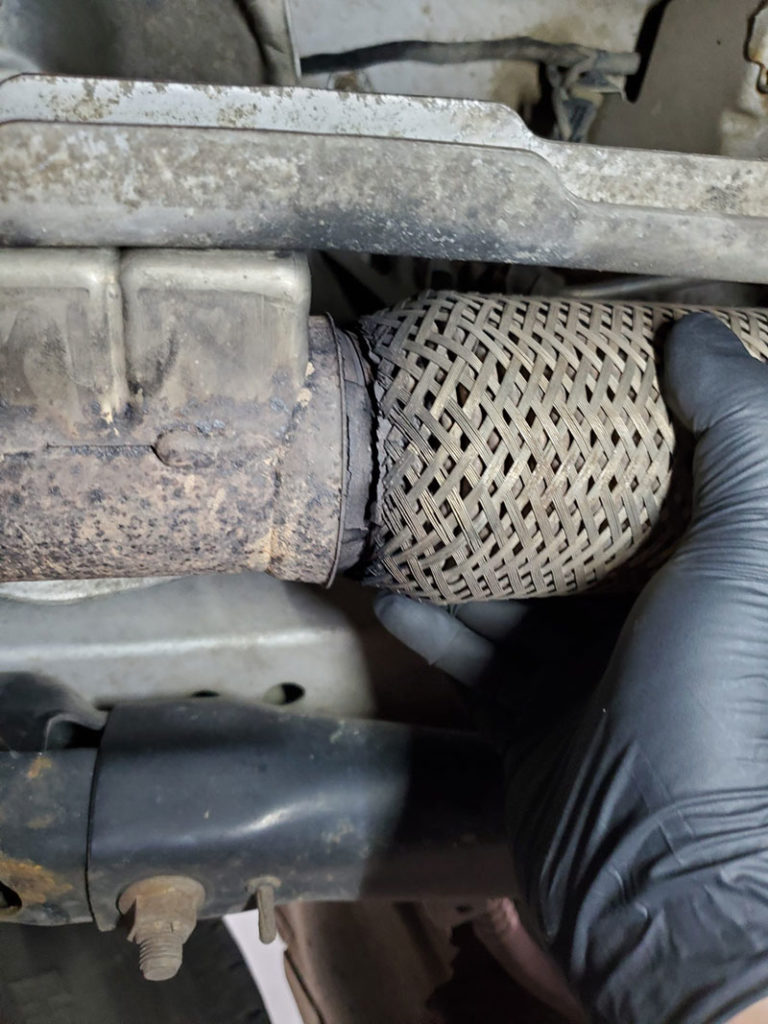
5. Glow Plug Failure
Sprinters come with diesel power only. It means they all have glow plugs that make starting a cold engine easier. Glow plugs themselves or their control module usually call it quits by 150K km (95 k miles). The module can be swapped easily, but the plugs – through heat-cold cycles and rust – become so attached to the engine that they prefer to break in half rather than being extracted. If this happens, the repair cost will skyrocket. Special extraction tools may save the day and fish out the stuck piece. The worst-case scenario is “engine out and apart”.
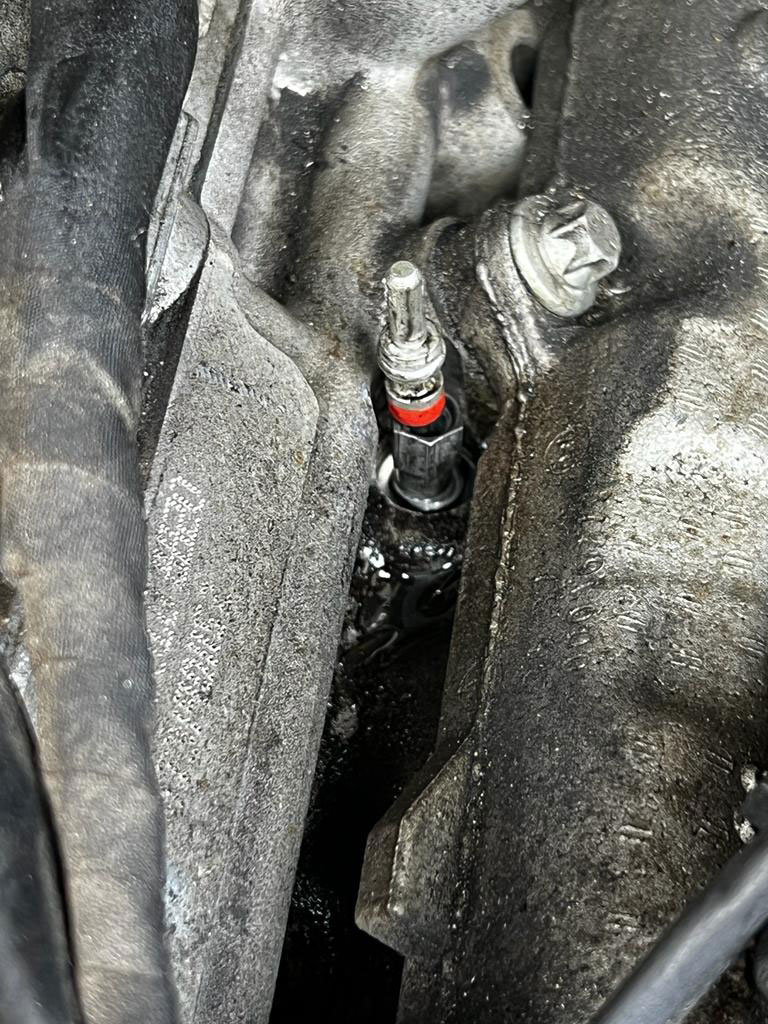

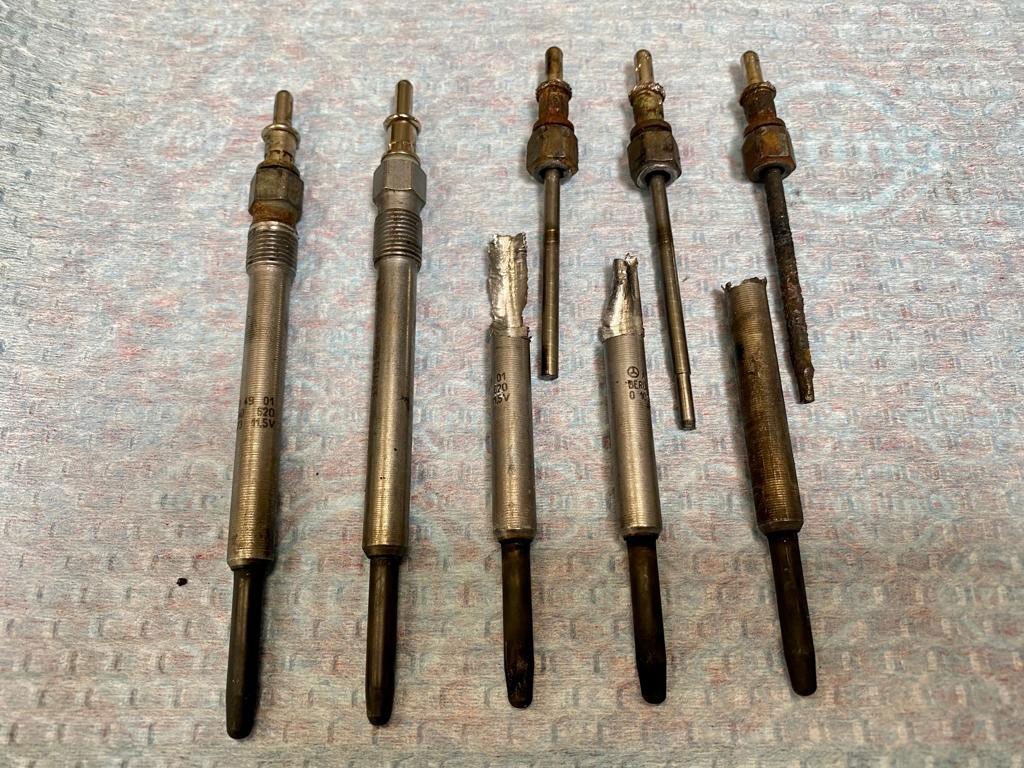
6. Engine Oil Leaks
After the engine is past a certain engine hours mark, it will leak oil. In other words, vehicles that gobble miles on highway may stay dry up to 400-500K km, while the city dwellers will be all wet by mere a mere 100.
There are several most common spots to watch. The weakest is the oil filter housing. Once it leaks, oil drips all over the drive belt (see Item 1), eventually destroying it. The bad news here is that it is NOT “just a gasket”. It is the whole housing. Fortunately both parts and labor are within reason. But since “you are there” and there is a significant labor overlap, it is worth swapping the drive belt and its pulleys at the same time.
Another common leak spot is on the left side of the engine and is caused by the oil cooler gasket. Oftentimes it is mistakenly diagnosed as the rear main seal leak. The gasket costs peanuts but requires lots of labor hours to get to. This is the most expensive leak to fix.
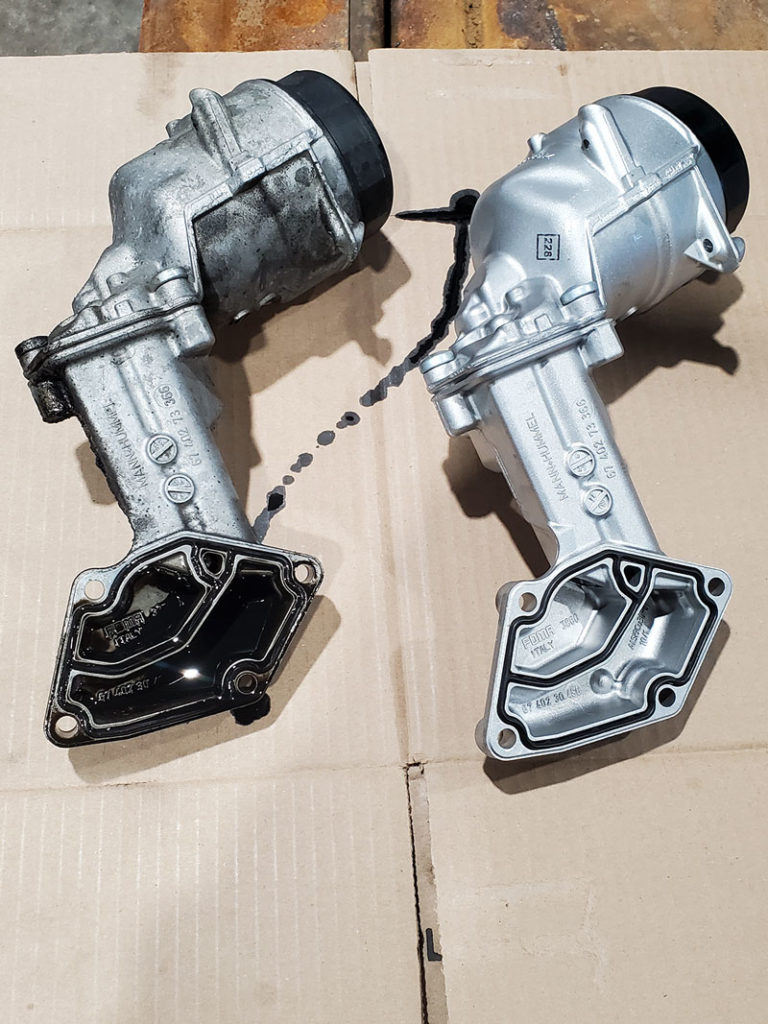
And the final trouble spot is the vacuum pump. The pump is only replaced as a whole unit. While the work is relatively simple and not pricey, the pump is.
7. Fuel Injector Failures
The fuel system on modern diesel engines is very complicated and has many components (and points of failure). The weakest link is the injectors. They may leak fuel back into the return line, preventing the engine from starting or making it very difficult. They also may leak fuel into cylinders, melting the pistons and creating burrs and scratches in cylinder walls. Or they may leak exhaust gases from cylinders outside through their lower sealing washers (the so-called “black death”).
Whenever any of the above happens and problems are diagnosed, it is usually multiple injectors that require replacement. The labor is relatively inexpensive, but parts can be costly.
All that said, lots of trouble and financial losses can be prevented. The injectors are extremely sensitive to timely maintenance, fuel quality and cleanness. And also, to the skills of mechanics.
8. Air Intake Leaks
We frequently see air leaks in Sprinters’ intake systems. Quite often, it is the result of an unqualified person working on the vehicle. Most common issue is the damaged air filter pipe due to incorrect filter replacement.
But there are natural causes too. Usually gaskets and hoses get tired, like intercooler boost pipes and intake resonator seals.
9. Alternator and Starter Failures
Another common one, especially on camper vans, where the number of power consumers is higher, and the alternator must work overtime to cope with demand.
Another reason for the alternator’s premature demise is oil contamination that comes from leaking boost pipe or vacuum pump mentioned above.
Starter troubles are far less frequent than those for the alternator, but we do see them fail from time to time, resulting in “no-start” condition.
10. Uneven Front Tire Wear
Common trouble resulting from inadequate qualification or poor tools supply of shops that do wheel alignment. To achieve correct wheel alignment on all Sprinter vans it is necessary to use a special tool to measure ground clearance. Without it all angles remain slightly off and that causes excessive and uneven wear of front tires. The tool is pricey and not many shops bother to spend on it. But we do, so we get it right, guaranteed.
At AutoGermany, we know these vehicles well. Our extensive years of experience in Mercedes Sprinter Van repair and service makes us a choice you can trust. We will be glad to have you and your Sprinter at our shop so that for many miles and years your van can do its job reliably and without eating into your profits or spoiling your outdoor adventures.
Comments Off on Common Mercedes Sprinter Van Repairs & Issues